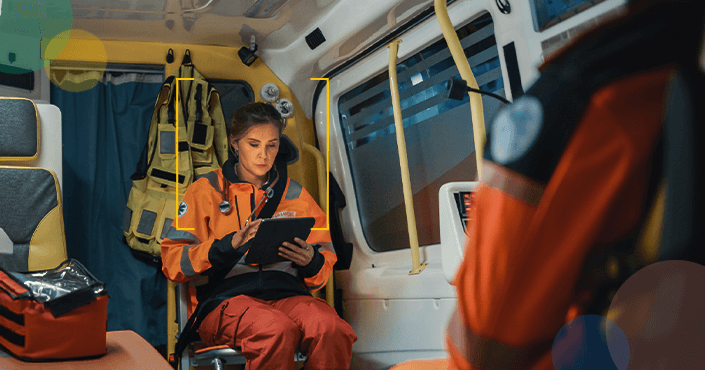blog


A typical day for an Emergency Medical Services (EMS) provider can be anything from providing pre-hospital care for a patient who is being extricated from a mangled automobile, to managing a severely mentally ill patient, to retrieving a Cheerio from the nose of an adventurous toddler. They provide emergency medical services in an array of situations that almost defies description.
Career Path
There are a number of ways by which someone might enter the field of EMS. Currently, the Committee on Accreditation for EMS Professions (CoAEMSP) does not require a college degree as part of their minimum standards for accreditation. However, in 2013 the National Registry of Emergency Medical Technicians (NREMT) did identify four types of pre-hospital providers: Emergency Medical Responders, Emergency Medical Technicians, Advanced Emergency Medical Technicians and Nationally Registered Paramedics. The training hours required for each of these providers range from approximately 60 hours to over 1,000 hours.
Job Outlook
Not surprisingly, the outlook for EMS jobs is good. In their Occupational Outlook Handbook, the Bureau of Labor Statistics (BLS) anticipates an 11% increase in jobs between 2020 and 2030, or an increase of 261,300 jobs.
EMS organizations understand the importance of recruitment and retention. Turnover rates are in the 20%-30% range and their position on the front lines during the COVID-19 pandemic has caused a slight increase in turnover amongst these providers.
EMS providers have great career options. They may choose to seek higher levels of certification to rise to the rank of paramedic or the nascent field of specialty paramedic. They may also choose to pursue EMS leadership roles at a local, state, or national level. Or they may choose to continue into other related fields such as EMS educator, nursing, physician assistant or physician. It is also possible to pursue administrative or clinical roles in other healthcare organizations such as urgent care centers, and emergency departments, hospitals, ambulatory care centers, etc.
The Right Resources for EMS Training
The Commission on Accreditation for Pre-Hospital Continuing Education (CAPCE) provides content that helps to ensure that pre-hospital providers get the required training regardless of their designation. HealthStream’s EMS Program offers more than 70 hours of CAPCE-approved courseware. In addition, the platform also gives leaders the option of customizing the training experience by uploading their own courses and offers a flexible template that will help meet any organization’s unique training requirements.
The platform is rich in engaging and relevant content and the virtual format makes it easily accessible for providers.
EMS Training – Real Solutions
EMS is no different from any other point on the continuum of care in that ongoing training to build competency, address changes in best practices and to maintain credentials is a part of every pre-hospital provider’s career. And, just like their colleagues on other stages of the continuum of care, they need practical and efficient ways to maintain those certifications.
HealthStream can help your organization optimize competency while reducing EMS training costs. The EMS Program is easy to navigate and can be accessed from any device, allowing your providers a convenient way to access education whenever and wherever they are. It also helps leaders to monitor performance and completion rates for students to ensure regulatory and organizational compliance.
HealthStream’s learning management system and healthcare training solutions support medical training initiatives and allow for the best patient care.
View All Learning & PerformanceExpand the decision-making skills and effectiveness of your healthcare workforce with HealthStream's workforce development programs and services.
View All Clinical DevelopmentComprehensive, industry-leading provider onboarding and credentialing software that validates health outcomes and supports provider assessment.
View All CredentialingMake sure your healthcare staff can schedule out appointments and work schedules with ease using our line of nurse scheduling software solutions.
View All SchedulingWhen you enact HealthStream's quality compliance solutions, you can do so with the confidence your healthcare organization will meet all standards of care.
View All Quality & ComplianceStop wasting money on RCM issues. Learn how to Provide your team with expert-led revenue cycle training to help them reduce denied claims, reimbursement mistakes, and more.
View All Revenue Cycle EducationLearn about our advanced resuscitation training solutions. Our solutions are designed to help improve patient outcomes.
View All Resuscitation